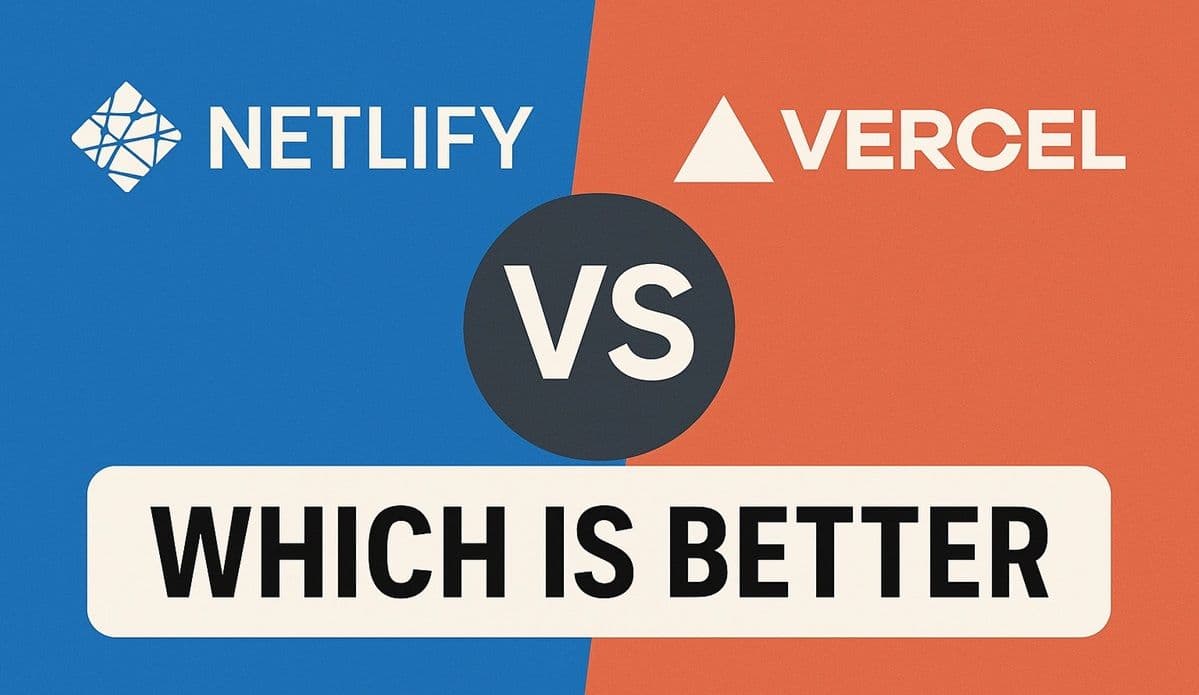When it comes to modern frontend deployment, two names dominate the conversation — Netlify and Vercel. Both platforms make it simple to push a React, Next.js, or static site live in seconds.
Yet they approach hosting from slightly different angles:
- Netlify grew from the Jamstack movement, focusing on flexibility and plug-and-play workflows.
- Vercel was built by the creators of Next.js, tightly integrating the framework into its hosting pipeline.
This comparison explores their performance, developer experience, pricing, and ecosystem support to help you decide which fits your next project.
See Also: How to Host a Website with cPanel (Step-by-Step Guide)
Netlify vs Vercel
| Feature | Netlify | Vercel |
|---|---|---|
| Free tier | Generous starter; includes Functions & Previews | Generous starter; strong Edge & Previews |
| Pricing | Usage-based with team plans | Usage-based with team plans |
| Edge runtime | Deno-based Edge Functions | Edge Runtime (Web API based) |
| Framework focus | Works with any static or SPA project | Deep integration with Next.js |
| Analytics | Optional paid add-on | Built-in (Hobby / Pro tiers) |
3. Performance & Build Speed
Both hosts use globally distributed CDNs and smart caching. Vercel tends to edge out the competition for Next.js apps because its build system supports incremental static regeneration (ISR) natively.
Netlify counters with a reliable CI/CD pipeline and build plugins that optimize other frameworks such as Gatsby or Astro. For purely static sites or non-Next.js projects, the difference is minimal; both deliver sub-second global responses.
4. Developer Experience
Netlify wins on simplicity: connect a Git repo, pick a branch, and it deploys automatically. Its CLI, environment variable editor, and built-in form handling make it a great fit for mixed-stack teams.
Vercel, meanwhile, feels purpose-built for React developers. The vercel CLI mirrors local dev behavior, and automatic preview deployments for every PR create a tight feedback loop for teams. If your workflow revolves around Next.js, Vercel’s developer experience is second to none.
See Also: How to Deploy a Site on Cloudflare Pages (Fast & Free)
5. Pricing and Scalability
Both offer generous free tiers, then scale usage-based. Netlify’s pricing is slightly easier to predict for static sites, while Vercel’s Pro and Enterprise tiers favor high-traffic Next.js applications that benefit from Edge Functions and image optimization.
For small projects or portfolios, either free plan will serve you well. As your traffic or build minutes grow, pricing will depend on your team size and how much you lean on dynamic features.
6. Integrations and Ecosystem
Netlify’s strength lies in its plugin ecosystem — you can add redirects, CMS integrations, and analytics without touching your code. Vercel focuses on tight integrations with Git, GitHub Actions, and frontend frameworks.
If your stack includes Sanity, Contentful, or Supabase, both connect easily, though Vercel’s framework detection makes setup nearly automatic.
7. Pros and Cons
Netlify Pros
- Works with virtually any static site generator
- Build Plugins and Functions for custom workflows
- Clear pricing and dashboard simplicity
Netlify Cons
- Next.js optimizations lag behind Vercel
- Some advanced features (analytics, edge) cost extra
Vercel Pros
- Native Next.js support and zero-config deployments
- Blazing fast previews and Edge Functions
- Polished developer tools and analytics
Vercel Cons
- Pricing is less predictable at scale
- Limited customization outside the React ecosystem
8. Verdict
If your primary framework is Next.js, Vercel delivers the most seamless developer experience and the fastest edge performance.
For teams building static sites, Jamstack projects, or multi-framework apps, Netlify remains a flexible, cost-effective choice.
In short:
- Pick Vercel for deep Next.js integration and edge innovation.
- Pick Netlify for framework diversity and plugin-driven workflows.

